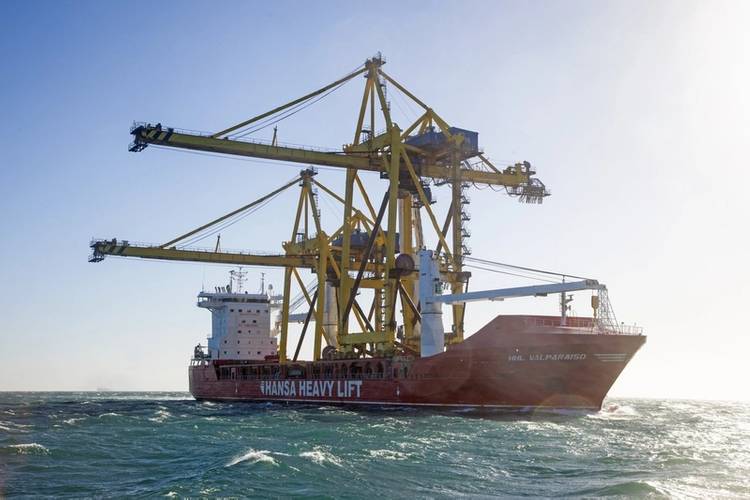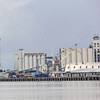Ship-to-shore Cranes Shipped via The Northern Sea Route
HANSA HEAVY LIFT has transported the first-ever ship-to-shore (STS) cranes via the Northern Sea Route (NSR), relocating them from the port of St Petersburg to the port of Vostochny, spanning both the European and Far East regions of Russia.
HHL Valparaiso is the first vessel to sail open hatch through the Northern Sea Route, which is covered by thick ice for most of the year and has a limited window of about two months open to cargo voyages.
This allowed the two cranes, each weighing 820 metric tonnes and measuring 61 meters in height and 92 metres in width, to be shipped partially above and below deck.
“The Northern Sea Route was the only viable option to complete this voyage in the required timeframe,” said Gleb Faldin, Commercial Manager, HANSA HEAVY LIFT.
“In the Arctic there is no room for mistakes. During the passage, the vessel has limited connection and only a few points of shelter.
“It is important to understand the legal framework to navigate the NSR, to plan carefully, to be prepared for the unexpected, and most importantly to have the right team on board the vessel and in the office.”
Faldin added that a two-month delay in the cargo being ready meant that HHL Valparaiso had to be repositioned for the voyage, which was originally planned for HHL Tokyo.
HHL Valparaiso travelled from Qingdao, China to St Petersburg via the NSR to load the cranes, and then went back through the NSR a second time to complete the mission, which was accomplished in record time.
Crews had only a few weeks to complete the voyage, as the cargo was loaded in October and had to be delivered to its destination by late November before the route completely froze over.
Other challenges included limited space aboard the HHL Valparaiso, which holds Ice Class E3 equivalent to Russian Arc.4 (Finnish- Swedish Ice Class 1A).
Additionally, the cranes were not designed to be lifted, requiring careful planning from all parties involved in the move, as well as strong engineering expertise.
“The Northern Sea Route is an important alternative that can save weeks from a voyage, but to be successful you need careful planning and engineering, the right equipment, capable vessels, and experienced crews,” said Heinrich Nagrelli, Project & Transport Engineer, HANSA HEAVY LIFT.
“Due to the STS’s very high center of gravity (CoG) at 30 meters above deck and 70 meters air draft, as well as draft restriction of 7.7 meters, a careful and detailed plan was needed from the start.
“This included a load spreading design and a structural analysis of the hatch covers and lower hold, a lifting stability assessment, a lifting simulation, fulfilment of Flag State requirements (open hatch, visibility, arctic weather conditions, COLREGs*), and the approval of the Russian Maritime Register of Shipping, as well as the arranging of ice breaker assistance.”
ZAO ‘SMM’, a leading manufacturer of heavy port handling equipment in Russia, was charterer of the HHL Valparaiso and in charge of overall project management as well as the transportation of the two STS cranes.
“The high professionalism of ZAO ‘SMM’ and good mutual cooperation with HANSA HEAVY LIFT ensured the successful and timely implementation of this project,” said Mikhail Skripchenko, Project Manager at ZAO ‘SMM’.
“Our company has proven expertise in the area of logistics for the transport of heavy cranes and other oversized equipment via Russian inland waterways, as well as the Northern Sea Route.
All HANSA HEAVY LIFT vessels can travel along sea routes with an ice thickness of up to 0.8 meters.
*International Regulations for Preventing Collisions at Sea















